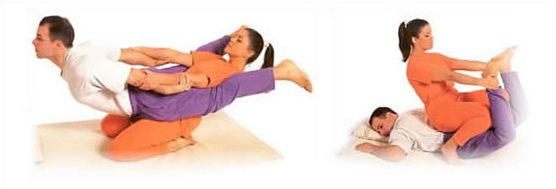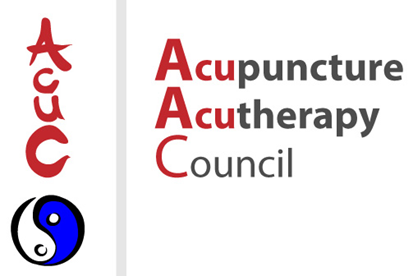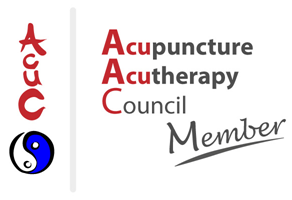Thai Traditional Massage
What is Traditional Thai Massage?
Thai massage is a healing system that aims to maintain the body's physical condition throughout life and to balance and tranquillize the emotions. Many of the problems of a Western lifestyle call out for the sort of help that this therapy can provide.
Even the most stressed and pressurised individual can emerge from this kind of massage with a feeling of lightness like floating on air.
Origins
During much of its history, Thai traditional massage had a strong religious significance, representing "The giving of loving care", so important in Buddhist philosophy. Jivaka Bhaccha, physician to the Buddha, is credited with having developed it some 2,500 years ago.

It was traditionally practised only in temples by the monks. Not until 1832 was a text written to describe this unique massage. By order of King Rama 111 the writtings were carved in stone and can be seen at Wat Pho in Bangkok.
The phenomenal growth in popularity of this form of massage is due to the vast number of tourists who visit Thailand every year returning home with tales of massage bliss at the hands of some Thai master. It should not be confused with what goes on in the sex parlours of Bangkok or out on the beach. Thai Traditional Massage is serious stuff.
Thai traditional massage is performed on the clothed body on the floor and is rather like applied yoga. It is famous for the wonderful stretches that it imposes on the receiver.
Everyone who experiences it at the hands of an expert emerges with feelings of wholeness and an ability of being able to almost float on air. It is unsurpassed in its ability to induce mental and emotional relaxation with whole body flexibility.
The origins of this type of massage are vague. It has elements of the Indian Ayurvedic and Yogic systems and hints of Chinese Tui Na. This is not surprising since Thailand is situated at what was an important trading crossroads between India and China.
It has probably existed in roughly its present form for over 1,000 years. It is based on the body's energy channels called SEN but far less precisely than those of Traditional Chinese Medicine. Hands, elbows, knees and feet are used to massage and manipulate the body into a bewildering number of different positions.
Is it suitable for everyone?
All the usual contraindications apply. Additionally, it is not suitable for anyone with artificial hip or knee joints, or has undergone surgery during the last six months. All manipulations involving the back should be avoided with those who have had major surgery on the spine.
What does it do for you?
By moving joints through a range of movements that are all just a little more than the receiver would be capable of unaided, the body becomes supple and flexible. Intrinsic energies are balanced to promote pain free, good health. The greatest benefits from this unique type of massage come to those who are able to relax to the point where they become putty in the hands of the massager.
How does Thai massage differ from Western massage?
Thai massage involves the most complex physical interaction between giver and receiver of any massage available today. Even though the participants are fully clothed throughout, Thai traditional massage is the ultimate non-sexual touch experience.
Only a few massage techniques are used, most of the sequence is based on large scale stretches and manipulations. The way the masseur positions and balances himself and uses his weight to achieve what looks like effortless leverage is just as important as the details of the techniques he uses.
Quite often the receiver of Thai massage needs to co-operate and work with the masseur to create the desired effects.( see photo ) Western massage is a soft tissue treatment using oil or talc on the bare skin and is rather static by comparison.
Even sports massage uses few manipulation techniques. Thai massage contributes to high levels of flexibility in contrast to Western massage which has little to offer in this respect.
What happens during a session of Thai massage?
You must wear light cotton clothes. A tracksuit is ideal as the legs and arms should be covered. During the massage your feet will be bare. The room will be set out with a massage mat on the floor.
The therapist will also be wearing light cotton clothes and will be barefoot. You will be asked some questions about the condition of your health to make sure you have no problem that could contraindicate this kind of treatment.
The massage begins with you lying in a relaxed position on your back. The sequence starts at your feet. It is very thorough and feels much like reflexology. However, this is only the beginning. Each leg is now massaged in turn with lots of palming and deep "thumb walking" along the energy lines.
Both legs are manipulated to affect hips and lower back. Next, the abdomen, chest and arms are treated. As always the pace is quite unhurried. Thai masseurs behave as if time is of no importance.
At this point in the massage you will be asked to lie on your side. The other side will be treated in turn. Every part that is accessible in this position will now receive detailed attention. With the changed position you may hardly recognise that some of the massage techniques are repetitions of ones used earlier.
When all the side techniques have been completed you will change position again and lie face down on the mat. Everything that is exposed-feet, legs, buttocks, back, arms and hands will be pressed, kneaded, stretched and manipulated.
You will be reluctant to assume a sitting position when asked to do so for the final section of the massage which treats the neck, shoulders, head and face. The unique feature of Thai massage is that every part of the body is massaged and manipulated in as many different positions as it is physically capable of adopting.
The greatest benefits from this unique type of massage come to those who are able to relax to the point where they become putty in the hands of the massager. At no time should the receiver "assist" by actively helping any particular movement that is being carried out.
What conditions does it treat?
Headaches, pain and tension in the neck, shoulders, back and hips all respond to the Thai therapists touch. Many who receive regular massage report improved sleep and sciatica sufferers also enjoy relief from their pains. Joint mobility and muscle tone are increased to improve posture. There is a general calming effect at an emotional level.
Who will it help?
Almost anyone can benefit from receiving Thai Traditional Massage. The main exceptions would be women in later pregnancy and the very frail, particularly if suffering from osteoporosis. The skilled therapist will always be able to adapt the massage so that any physical disability is accommodated.
Does Thai Massage have a special role to play in today's world?
For maintaining the body in a youthful condition Thai massage has few equals. It can be done easily almost anywhere since it requires no special equipment. Its power to alleviate stress is impressive and in this stress-ridden world its role must be guaranteed.
Many people's idea of total bliss is to have one's own personal Thai trainer (or should it be "maintainer") to help achieve the nearest thing to eternal youth! For anyone who wishes to make a regular investment in health and fitness, Thai massage is an excellent choice.
What training should a therapist have?
A professional therapist should have a recognised diploma with a thorough understanding of anatomy and physiology.
Thailand Holiday Tip
Real traditional Thai massage can be experienced at Wat Pho in Bangkok and at the Hospital of Traditional Thai Massage in Chiangmai. Most good hotels can provide a traditional masseur but be sure to make clear your need for a traditional one.
Thai Traditional Massage has been practised in essentially its modern form for over one thousand years. It is based on yogic principles but unlike the Chinese system, lacks a sophisticated theoretical background. Like Tui Na it is concerned with the intrinsic energies and their balance.
- The Thai practitioner uses over 150 techniques to stimulate energy flow in the channels which are called SEN. However, both Chinese and Indian influences are apparent in Thai massage, working as they do on the healing energy lines of the body.
- Thai massage is a wonderfully flowing sequence of stretches interspersed with pressure applied to various parts of the clothed body. It teaches the subtle and complex physical interaction between giver and receiver which are so important at all levels.
- The exquisite stretches eliminate tension, improve flexibility, enhance sports performance and maintain a pain-free healthy body.
- Thai massage is performed on the floor on the clothed body and requires no special equipment other than a thick blanket. Thai massage provides practitioners with an intensely therapeutic and totally holistic tool to add to their repertoire.
- Thai massage is designed to stretch every accessible muscle a little more than it normally would under the action of strongly contracting antagonistic muscles.
Thai massage complements most types of bodywork treating those parts of the body that they do not reach !
"THAI-ED AND GONE TO HEAVEN
Afterwards I felt I'd had a virtual reality workout exercised to the nth degree without breaking into a sweat"
COSMOPOLITAN June 1998


